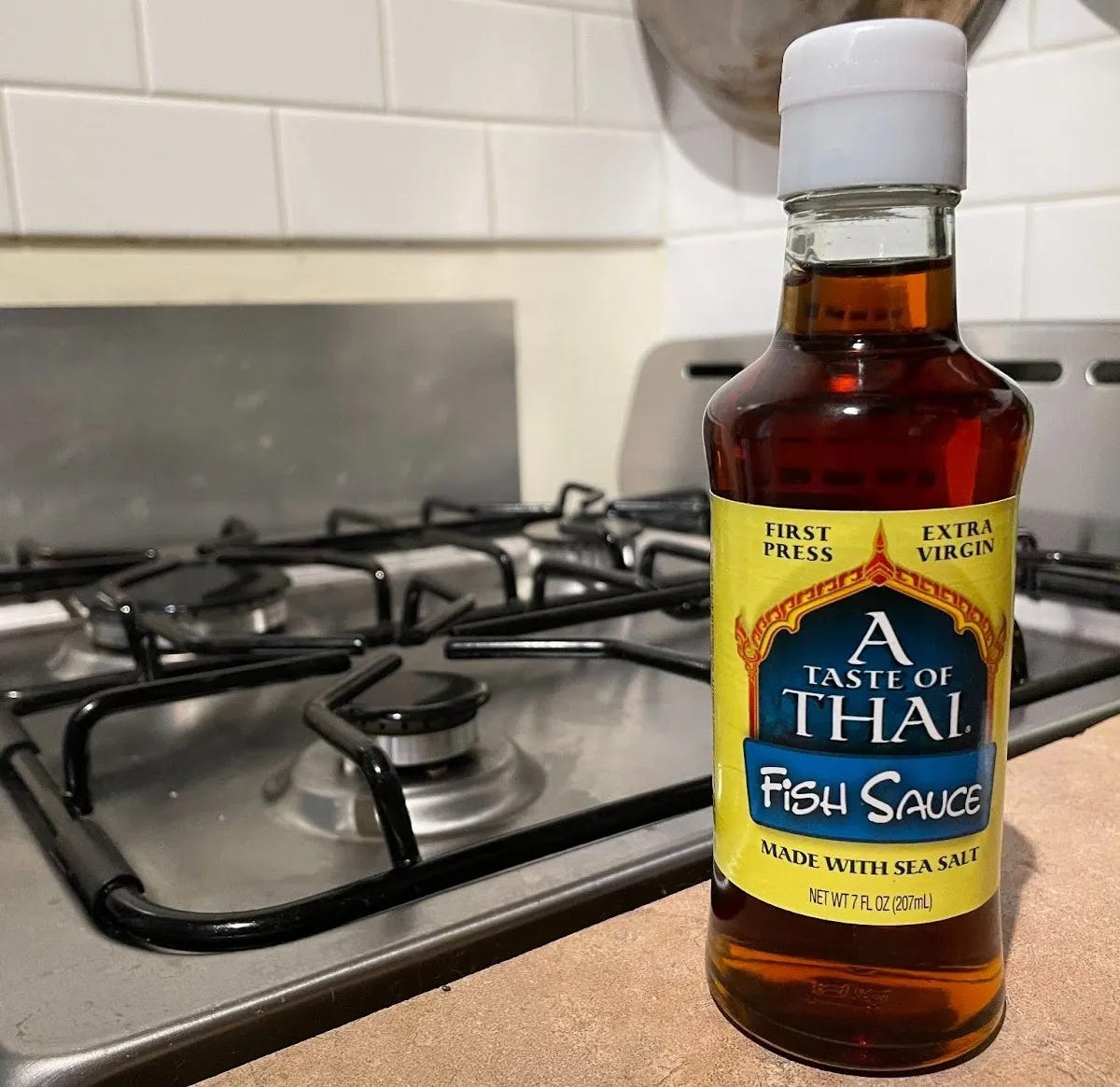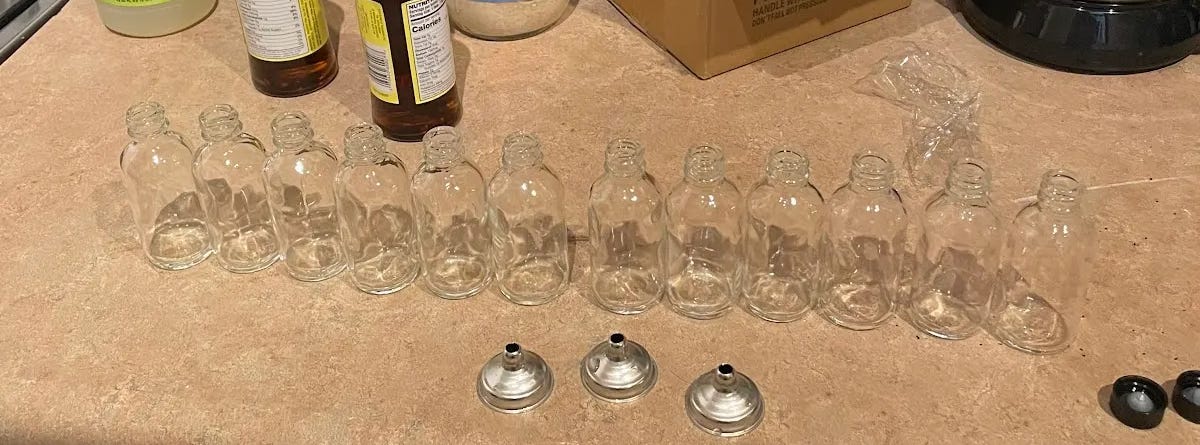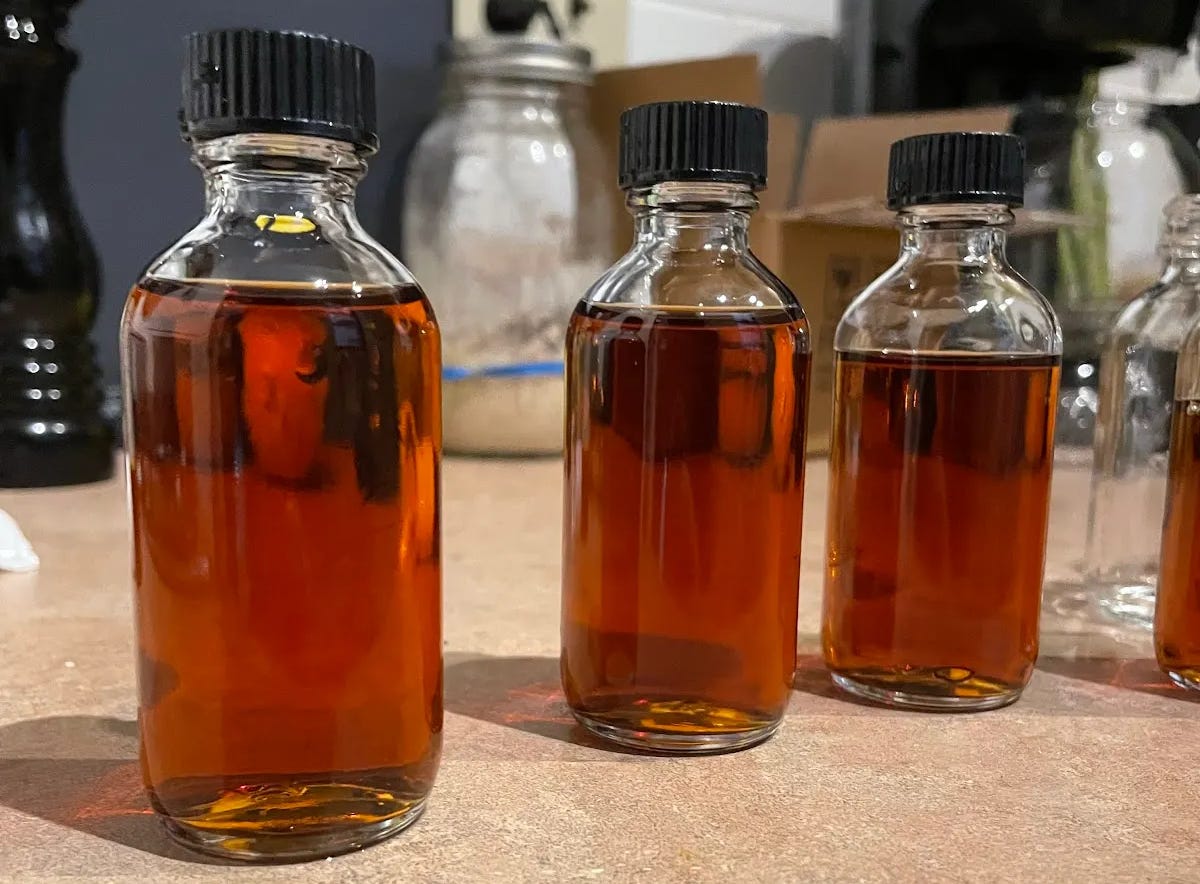The big idea: A reverse Costco
In NDI’s first reader-submitted idea, we ask the question: what if we sold you less for more?
A reader forwarded me this tweet:
This is a fun idea, and it does raise an interesting question: why is it harder to get small sizes? For someone with limited space (or limited tolerance for leftover bottles), getting exactly the 1oz of fish sauce you need might be fantastic.
My fridge is full of half-used sauces that haunt me. Is a reverse Costco the cure?
Why does Costco exist at all?
Costco, famously, has very small margins on the actual products they sell. The majority of their profit comes from their membership fees; as a consequence, their incentives are quite different from other retailers. Instead of trying to sell the most goods at the highest price, their goal is to:
Offer sufficient value that customers renew year after year
Minimize the cost of operations
Don’t lose money on inventory1
To provide sufficient value, Costco tries to offer the best prices to customers on their goods. Because they don’t need to make significant profits from sales, they can cut their markup to offer low prices; their average margin is around 12% compared to 25%-50% or more at traditional retailers.
They also don’t want to lose money on their operations, which means ruthless cost cutting. But what gets cut is a deeply important question; if the store sucks to go to, people aren’t going to keep paying their membership fees. So labor costs — think staffing, cleaning, etc. — are actually a little higher than competitors’, to provide the best experience.
What gets cut is the physical space — Costco is less of a store than a warehouse. This setup means they don’t have to use as much space for inventory storage in the back. Bigger portions mean fewer units to manage and restock. And by selling larger items, they’re delegating the spoilage cost of unused and unsold items to customers; in other words, instead of buying 1 oz of fish sauce you’re buying 80, with all the consequences for your fridge that implies.
So, can we reverse the model?
Proving this out
The first challenge to opening reverse Costco (to henceforth be called Revco) is getting the 1oz bottles of the fish sauce. Unfortunately, this isn’t for sale — nobody seems to package it like this out of the box. Setting up a new food manufacturing line is a six to eight figure expense and likely would require hundreds of thousands of bottles to break even.
At least at first, Revco would need to repack the bottles themselves to provide the right size fish sauces.
So I went back to Operations 101, and made a flowchart.
I also ordered a 10 pack of 2oz bottles on Amazon and bought a bottle of A Taste of Thai fish sauce.
I then went through the process of sanitizing my bottles and setting them up for distribution.
I unfortunately hit an early snag, when the plastic ring used to open the bottle immediately broke. I didn’t count this setback towards my timer, but it’s a good illustration on how manufacturing processes can go wrong. If this was a real factory, the 15 minutes I spent trying to pry the bottle open would have been disastrous.
I then decanted and sealed the bottles before packing them in the box, ready to go on a shelf.
I timed each step of the process, giving me the following results:
Assuming a $20/hr salary, the total operation implies a labor cost of about $0.53 per bottle. Adding in the cost of the fish sauce (~$0.40 an oz) and the wholesale cost of the small bottles ($0.10 each), the direct input cost per bottle is $1.03. With a 12% Costco markup, we can get you your fish sauce for $1.15. We reversed Costco!
Or did we?
First off, I’m willing to admit that doing this in my tiny kitchen is not how a food-safe certified manufacturing process might put it together. At a small scale, the right step is probably renting a commercial kitchen.
Between rental fees for a shared workspace (~$45/hr), cleaning fees (looks to be ~$25/hr), and insurance ($900/year), the costs start to add up. If we add that overhead to our existing production data, costs begin to balloon — even if we don’t include additional expenses like transport.
Total cost: $2.68, about the same as buying an entire bottle of fish sauce.
But that 12% margin is the Costco rate. Is anyone willing to pay a $100 per year membership fee to buy smaller bottles of fish sauce? For a low volume business like this, a 50% margin is probably a more realistic target.
Total cost: $4.02
Small scale inventory is going to need storage space, meaning a portion of your storefront needs to be dedicated to storage. Most retail stores dedicate ~15% of space to storage; to make up for the implied lost retailing space, let’s assume we apply that 15% to our base cost.
Total cost: $4.62
We also need to start thinking about spoilage, shrinkage2, and restocking. The little bottles are going to go bad quickly and be pretty easy to steal by aspiring chefs. Let’s say that we lose 1.6% to shoplifting and 5% to spoilage, both industry averages. On top of that, restocking costs amount to $0.08 a bottle based on timing myself.
Total cost: $4.95
It turns out that convenience is expensive; costs balloon quickly as you add complexity to a process. Grocery stores often sell their produce at 1%-3% margins, making most of their money through higher margin packaged goods3. With all packaged goods, it’ll get expensive.
So, how can we sell you $0.40 of fish sauce for five bucks?
The reverse Costco
The first approach might be a reflection of the Costco model; let’s call it a Private Fish Sauce Membership Club (PFSMC). This idea is actually somewhat appealing for very rare or specialty ingredients: think black garlic, Iranian saffron, squid ink sauce, and I guess fish sauce. These items could be sold at Costco margins, acting as loss leaders for memberships and ancillary classes. It’s a natural adjacency to have a small chef space and host paid classes using the ingredients, only available to members who join for $120 per year.
If you opened this in the right neighborhood in New York, you might be able to eke out a living doing this. But the math is difficult; if you recruited 500 members and filled three classes a week, revenue would be in the $20,000 per month range — lots of retail spaces in Manhattan rent for more than that. And while we’re technically making 1oz bottles of fish sauce available, we’re not really meeting the vision of reverse Costco.
The PFSMC has its appeal, but it assumes our customers want to be part of a community. What if they just want to get their sauce, no matter the cost?
Getting people to buy less for more
Another approach is a true reverse Costco — a store focusing on selling small amounts of sauce at a profit, at the $5/oz price point. You might be thinking: “A store that just sells expensive bottles of common products is going to fail.” But all is not lost — the guilt Eize feels for their wasted fish sauce is the key to making this work.
Revco isn’t selling expensive thimbles of sauce: it’s selling the promise of a clean fridge. Everything sold is explicitly single serving, measured precisely to ensure that you never have any leftovers. This can also drive what inventory you choose to keep in-store; small, pre-packaged bunches of complementary ingredients act like a decentralized meal kit, charging a premium to avoid the guilt of food waste. Companies like HelloFresh or Blue Apron do the same thing, trading cost and plastic waste for convenience and portioning.
With Revco, you never have to avert your eyes from the expired bottle of hot sauce (even if you’re adding the waste of 10 small bottles in the trash).
Of course, much like meal kits, this raises the reasonable objection of environmental waste. The additional packaging and inefficient distribution means more waste, more trash, and more plastic in landfills. But environmentalists are not who we’re selling to, so why not go all in? A future where food waste is converted, almost by magic, into plastic waste.
Instead of reusable bottles, which linger in your fridge or recycling bin, switch to disposable plastic bottles designed to be thrown away. Use smaller and smaller units of packaging — 0.1oz squirt bottles that allow you to get exactly as much fish sauce you want. For fresh food, individually wrapped carrot sticks and celery will let you scale your vegetable use to exactly match a wide range of recipes. There’s even crossover with the weight loss industry, offering precise calorie controls through precise measurement of food.
The customer base for this probably overlaps heavily with Amazon Go4: young, high income, low-time, and shopping for ingredients to make one, specific recipe at a time.
Sure, you could try to make this a little less environmentally destructive with recyclable bottles or biodegradable algae plastic. But if you’re selling convenience, can you really ask someone to recycle?
Official idea rating
3/5. It’s expensive, terrible for the environment, and incredibly convenient. Depending how guilty you feel about wasted food vs microplastics, it might be a fridge revolution.
For me, I think the level of plastic waste is a step too far; I can’t imagine it’ll be socially acceptable to generate this much trash long term. Even if you talked the manufacturer into making smaller packaging, I just don’t see Revco hitting scale.
Although, I may have been too fast to drop the membership club — I would 100% join a club for chefs to try and buy unusual ingredients. For someone that hates running a profitable business and wants to launch that idea, consider me an early customer.
P.S. to you, the reader: Do you know any recipes that use fish sauce? I have a bunch of it in individually packaged small bottles that I need to use before they expire; please leave a comment with any ideas.
Costco does lots of other things besides these three; a big part of their strategy is using fewer SKUs and the Kirkland brand to give pricing power with suppliers. But the listed dynamics are probably the most relevant to a small store selling miniaturized bottles of fish sauce
Shrinking is the loss of inventory for whatever reason, but often is used as a polite term for shoplifting
They also have other revenue streams, like taking payments for prime shelf space
Amazon’s old “walk out with your stuff” mini grocery stores










I admire the IRL research! Another way to solve this problem (perhaps not with fish sauce specifically) is bulk stores, which manage to make a lot of sense in NYC and avoid some of the environmental issues. At least for the one I’m thinking of, they stock nicer version of goods ranging from dish soap to nuts to a limited produce section, so as a consumer you pay more per oz of each item - BUT you mostly have to bring your own reusable containers. That way the store doesn’t have to worry about restocking or packaging costs, except small brown paper bags for low volume purchases of dry goods, and you can choose precisely how much you buy. Case in point: I am still working through a $3 purchase of 1 oz of ground cardamom I bought a year ago and put in a random jar I had lying around, instead of forking out the $7 for the shaker.
You had me at “This is a fun idea”.